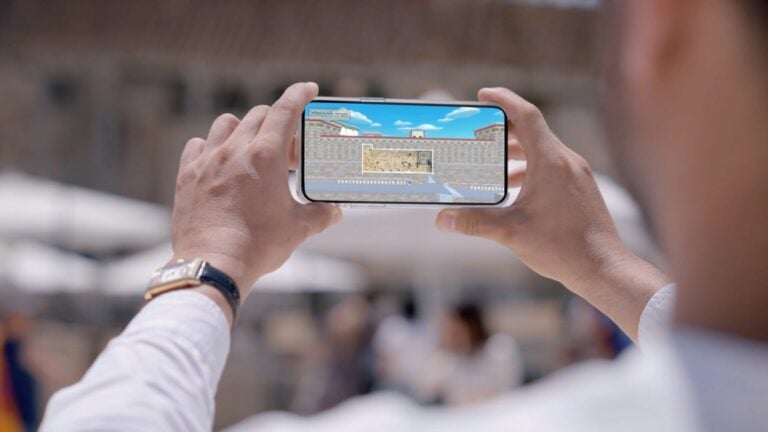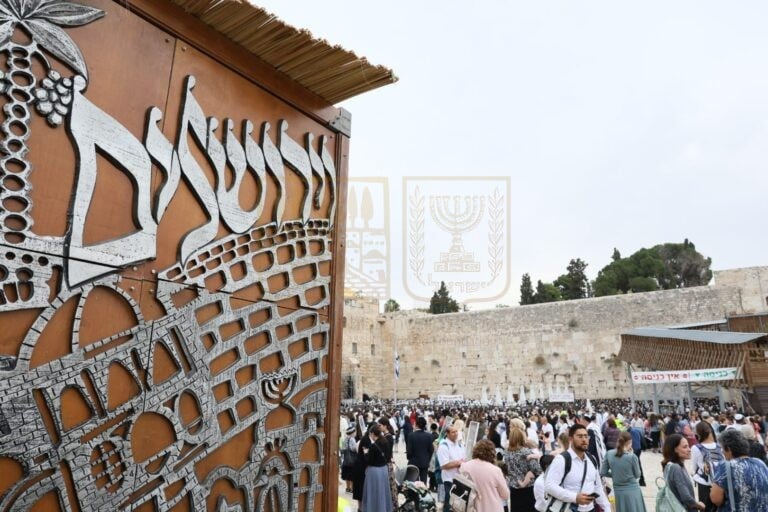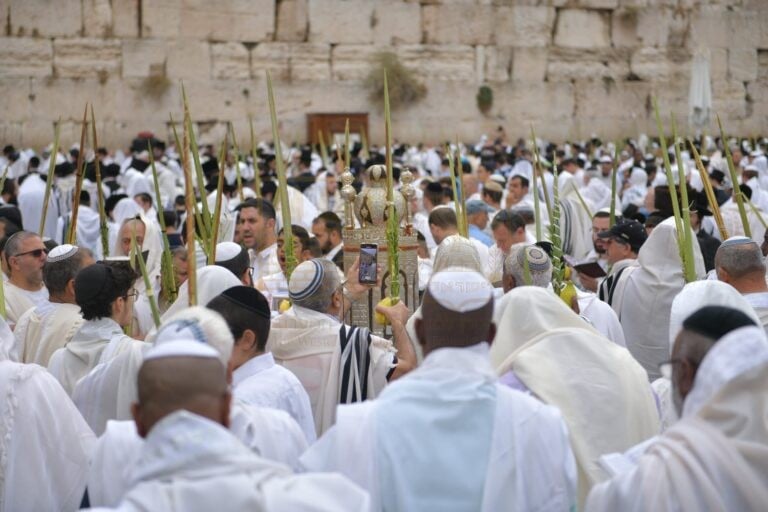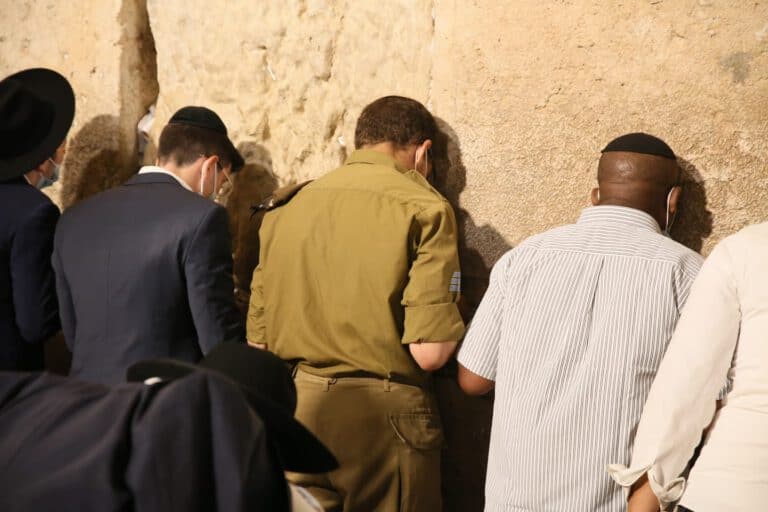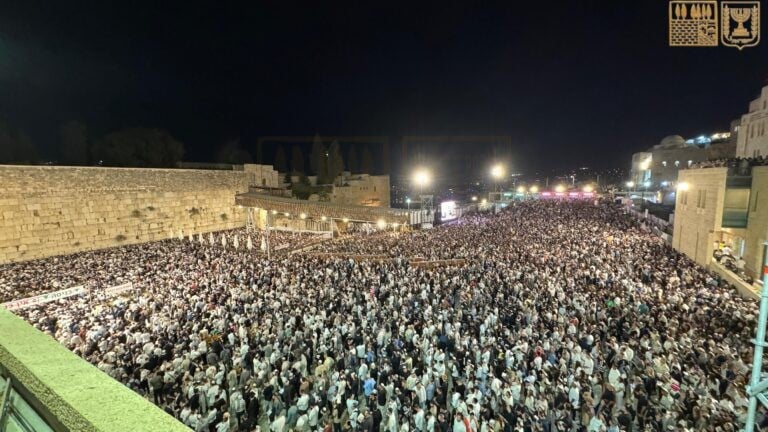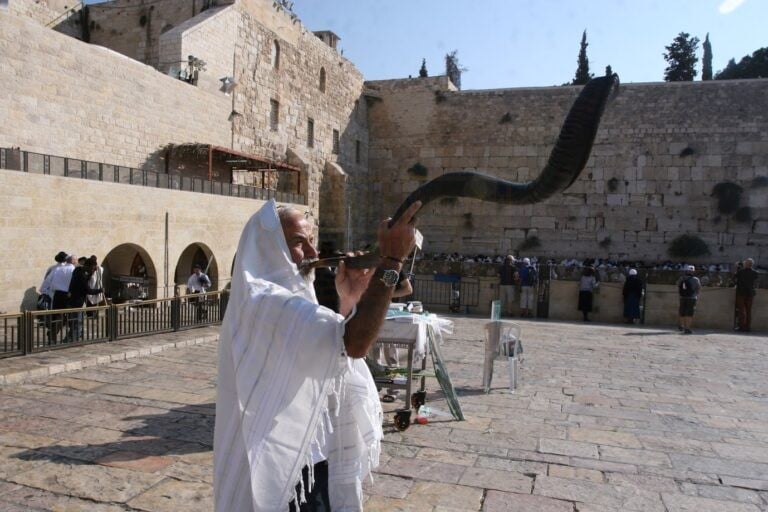|
Getting your Trinity Audio player ready...
|
Parashat Vayakhel – 5782
Rabbi Shmuel Rabinowitz, Rabbi of the Western Wall and Holy Sites
In the Torah portion of Vayakhel, we read about the collection of donations for the construction of the Mishkan (Tabernacle) and the preparation of its components and utensils – the Ark, the Menorah, the Table, the small inner Altar for burning incense, the large outer Altar for sacrifices, and the Basin in which the priests would wash their hands and feet before entering the Mishkan.
Just before Moses commanded the collection of donations, he instructed the Israelites with a commandment that at first glance seems unrelated to the Mishkan: observing Shabbat.
“Six days work may be done, but on the seventh day, you shall have sanctity, a day of complete rest to the Lord.”
(Exodus 35:2)
The sages, and following them most commentators, explained that this commandment was related to the construction of the Mishkan and was intended to limit the work on it and its utensils to the six weekdays only. On the seventh day of each week – Shabbat – preparations for building the Mishkan were halted, to resume again on the following Sunday.
As a result, the tasks prohibited on Shabbat were derived from the work of the Mishkan. Any work necessary for the construction of the Mishkan was defined as prohibited labor on Shabbat. Actions that were not necessary for the construction of the Mishkan were permitted on Shabbat and were not included in the list of acts prohibited on Shabbat.
The prohibition of work on Shabbat for the construction of the Mishkan underscores the importance and elevation of Shabbat. Even the most holy work, the construction of the Mishkan, which G-d Himself commanded, is forbidden to be performed on Shabbat. In earlier chapters, it is said that Shabbat is “a sign between Me and you for your generations, to know that I am the Lord who sanctifies you” (Exodus 31:13). Shabbat is the sign that points to the covenant between G-d and the people of Israel, and therefore, Shabbat rest cannot be annulled even for the sake of the sacred work of building the Mishkan. Only one need overrides Shabbat: saving a life. When a person’s life lies in the balance, Shabbat rest can be violated and there is an obligation to desecrate Shabbat to save a life.
Why is Shabbat not waived for the construction of the Mishkan? Rabbi Yisrael Meir Kagan, known as the “Chafetz Chaim,” one of the eminent rabbis of Eastern Europe in the early 20th century, explained its significance with a parable: There was once a businessman who went on vacation, so he closed his shop for several days. During this time, people came and saw that the shop was closed. When they inquired why the shop was closed, they were informed that the owner had gone on vacation and would return in a few days. The shop was working – it was just temporarily closed. But after a while, the business encountered difficulties, and the owner decided to close it permanently. When he closed the shop, he removed the sign that hung above the door with the name of the business. When the sign was removed, everyone knew that the shop was closed, and it was not another vacation…
Shabbat, says the “Chafetz Chaim,” is the sign that testifies that a person is a faithful Jew adhering to the tradition of Judaism. It is the “sign” of the connection between man and G-d. Even if a person fails in actions that are inappropriate according to Jewish law, if he observes Shabbat, he still has not removed the sign. Therefore, even the construction of the Mishkan does not waive Shabbat, which is “equivalent to all the commandments.” Every week, we have the opportunity to reinstall the blessed sign that testifies to our being an enduring link in Judaism, from Moses to this day.
